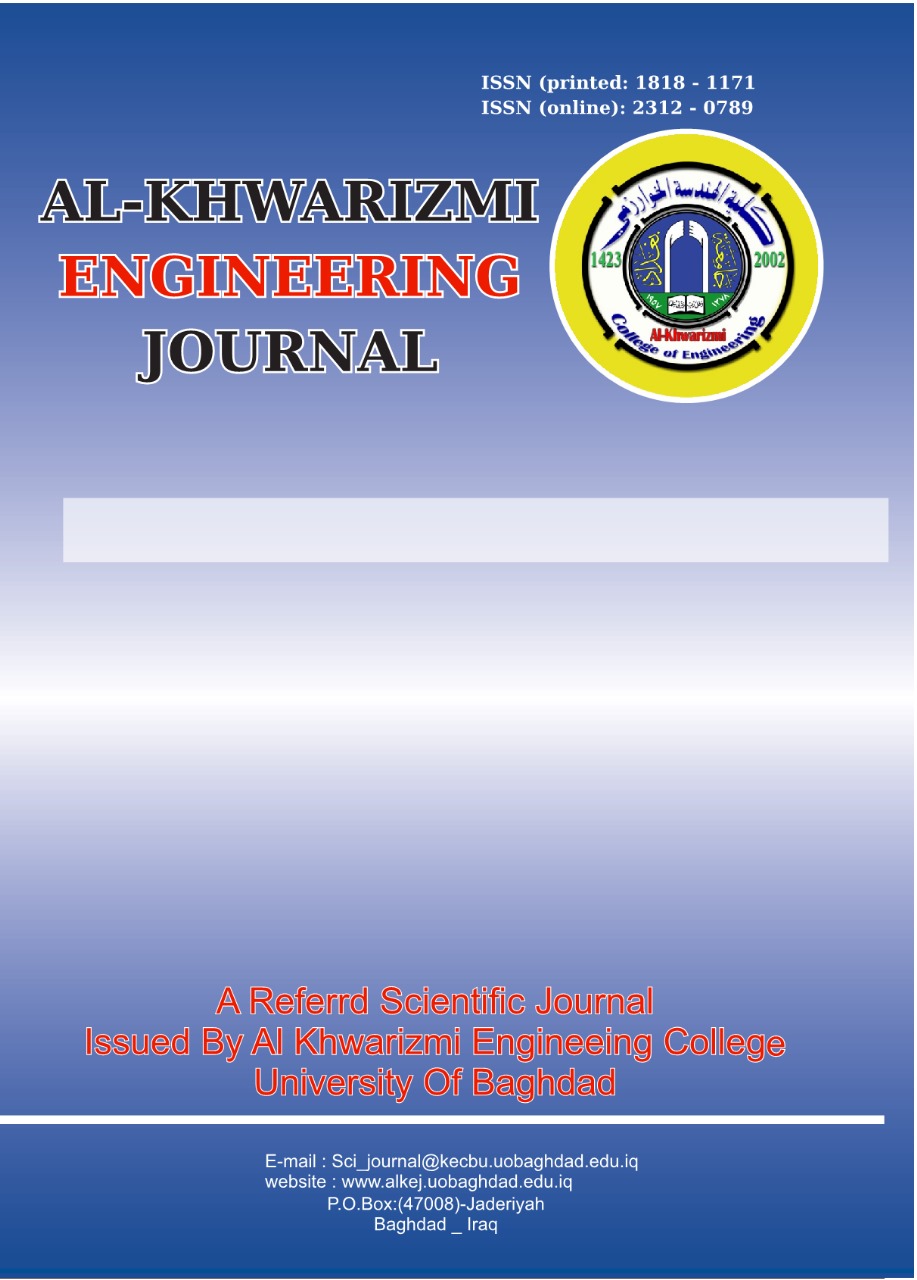Design and Analysis of a Spraying Robot
DOI:
https://doi.org/10.22153/kej.2022.07.001Abstract
An indoor spraying robot is built in this research to solve numerous challenges associated with manual spraying. The mechanical, hardware and essential technologies used are all detailed and designed. The proposed spraying robot's conceptual design is split into two parts: hardware and software. The mechanical design, manufacturing, electrical, and electronics systems are described in the hardware part, while the control of the robot is described in the software section. This robot's kinematic and dynamic models were developed using three links that move in the x, y, and z directions. The robot was then designed using SolidWorks software to compute each connection's deflection and maximum stresses. The characteristics of the stepper motors, power screw and belt drive, are calculated. Finally, an Arduino-Nano controller and stepper motor actuators were used to build and run the robot. As a result, the robot was able to move smoothly vertically and horizontally, according to the findings of the experiments as shown in figures 22, 23, 24, and 25. These figures showed the position and velocity curves of the links of the robot.
Downloads
References
Chen, Wei, and Dean Zhao. “Path Planning for Spray Painting Robot of Workpiece Surfaces.” Mathematical Problems in Engineering, vol. 2013, 2013, pp. 1–6., https://doi.org/10.1155/2013/659457.
Aris, Ishak Bin, and A. K. Iqbal. “Design and Fabrication of a Cartesian Painter Robot for the Construction Industry.” International Journal of Mechanical Engineering Education, vol. 34, no. 2, 2006, pp. 125–144.
Sorour, Mohamed. "RoboPainter–a conceptual towards robotized interior finishes." (2015).
Scalera, Lorenzo, et al. “Airbrush Robotic Painting System: Experimental Validation of A Colour Spray Model.” Advances in Service and Industrial Robotics, 2017, pp. 549–556., https://doi.org/10.1007/978-3-319-61276-8_57.
Tuli, Tadele Belay. "Mathematical modeling and dynamic simulation of gantry robot using bond graph." International Conference on Information and Communication Technology for Develoment for Africa. Springer, Cham, 2017.
Katsumata, Takuma, et al. “Optimal Exciting Motion for Fast Robot Identification. Application to Contact Painting Tasks with Estimated External Forces.” Robotics and Autonomous Systems, vol. 113, 2019, pp. 149–159.
N. Patel and R. Sarvaiya, “STUDY OF MATERIAL CHARACTERISTICS FOR EFFICIENT DESIGN OF SPRAY PAINTING ROBOT,”, International Research Journal of Engineering and Technology (IRJET), Vol.07, Issue03, 2020.
Muneer, Amgad, and Zhan Dairabayev. “Design and Implementation of Automatic Painting Mobile Robot.” IAES International Journal of Robotics and Automation (IJRA), vol. 10, no. 1, 2021, p. 68.
SPONG, Mark W., et al. Robot modeling and control. New York: Wiley, 2020.
Siciliano, Bruno, et al. Force control. Springer London, 2009.
Ljung, Lennart, and Torkel Glad. Modeling of dynamic systems. Prentice-Hall, Inc., 2002.
Khurmi, R. S., and J. K. Gupta. A Textbook of Machine Design. Eurasia Publishing House, 2005.
Ansoategui, Igor, and Francisco J. Campa. “Mechatronics of a Ball Screw Drive Using an N Degrees of Freedom Dynamic Model.” The International Journal of Advanced Manufacturing Technology, vol. 93, no. 1-4, 2017, pp. 1307–1318.
Tahseen F. Abaas, Ali A. Khleif, and Mohanad Q. Abbood, " Inverse Kinematics Analysis and Simulation of a 5 DOF Robotic Arm using MATLAB," Al-Khwarizmi Engineering Journal, Vol. 16, P. P. 1- 10 , March, (2020).
Iman S. Karem, Talal A. Jabbar A.Wahab, and Mawadah J. Yahyh. “Design and Implementation for 3-DoF SCARA Robot based PLC,” Al-Khwarizmi Engineering Journal, Vol. 13, No. 1, P.P. 40- 50 (2017).
Maryam Sadeq Ahmed, and et al. “Robust Computed Torque Control for Uncertain Robotic Manipulatorss.” Al-Khwarizmi Engineering Journal, vol. 17, no. 3, 2021, pp. 22–28., https://doi.org/10.22153/kej.2021.09.002.
Downloads
Published
Issue
Section
License
Copyright: Open Access authors retain the copyrights of their papers, and all open access articles are distributed under the terms of the Creative Commons Attribution License, which permits unrestricted use, distribution, and reproduction in any medium, provided that the original work is properly cited. The use of general descriptive names, trade names, trademarks, and so forth in this publication, even if not specifically identified, does not imply that these names are not protected by the relevant laws and regulations. While the advice and information in this journal are believed to be true and accurate on the date of its going to press, neither the authors, the editors, nor the publisher can accept any legal responsibility for any errors or omissions that may be made. The publisher makes no warranty, express or implied, with respect to the material contained herein.
















